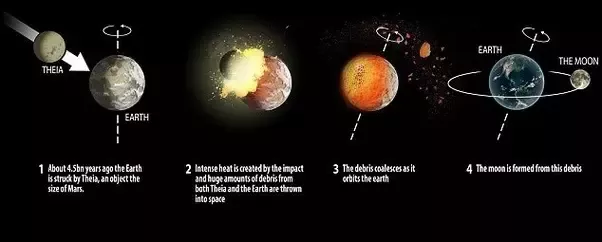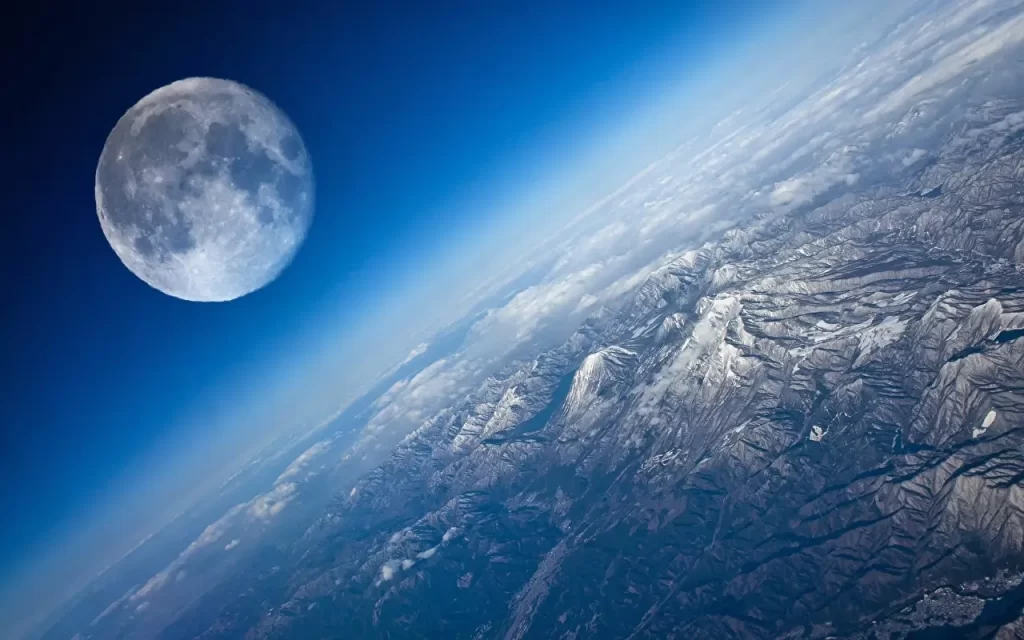The Moon, Earth’s constant celestial companion, has captivated humanity for millennia. Its shimmering presence in the night sky has inspired myths, legends, and scientific inquiry. But beyond its poetic allure, the Moon holds a crucial scientific designation: it is Earth’s natural satellite. This article delves into the intricacies of why the Moon is classified as such and explores the profound implications of this cosmic relationship.
Definition of Natural Satellite:
A natural satellite, often simply called a moon, is a celestial body that orbits a larger celestial body. In the case of Earth, the Moon orbits around it, making it Earth’s natural satellite. Natural satellites can range in size from tiny asteroid-like objects to large bodies comparable in size to planets. What distinguishes them is their orbit around a larger celestial body due to gravitational attraction.
Formation of the Moon:

The prevailing theory regarding the formation of the Moon, known as the Giant Impact Hypothesis, suggests that it was born from a colossal collision between Earth and a Mars-sized protoplanet called Theia, approximately 4.5 billion years ago. The debris ejected from this collision coalesced to form the Moon. This formation process resulted in the Moon’s orbit around Earth, establishing it as a natural satellite.
Characteristics of the Moon:
The Moon has several distinctive characteristics that solidify its status as Earth’s natural satellite:
- Orbital Motion: The Moon orbits Earth in an elliptical path, completing one revolution approximately every 27.3 days. This orbit is relatively stable due to the gravitational interaction between Earth and the Moon.
- Synchronous Rotation: The Moon rotates on its axis at a rate that is synchronised with its orbital period, causing the same side of the Moon to always face Earth. This phenomenon is known as tidal locking and is a common feature among natural satellites.
- Gravitational Influence: The Moon’s gravitational pull influences Earth’s tides, causing the rise and fall of oceanic waters in a phenomenon known as tidal forces. This gravitational interaction is a testament to the Moon’s significant presence in Earth’s cosmic neighbourhood.
- Reflectivity: The Moon’s surface reflects sunlight, making it visible from Earth and illuminating the night sky. Its reflective properties have contributed to its cultural significance throughout history.
Importance of the Moon as Earth's Natural Satellite:

The Moon plays a pivotal role in Earth’s cosmic dynamics, contributing to various phenomena and influencing life on our planet in profound ways:
Tidal Dynamics: The Moon’s gravitational pull causes tides, which play a crucial role in marine ecosystems and coastal landscapes. Tides affect nutrient distribution, biodiversity, and sediment transport along coastlines, shaping coastal ecosystems and habitats.
Lunar Cycles: The Moon’s phases, resulting from its orbit around Earth, have cultural, religious, and agricultural significance for many societies. Lunar calendars, based on the Moon’s phases, have been used for millennia to track time, plan agricultural activities, and observe religious rituals.
Scientific Exploration: The Moon serves as a natural laboratory for scientific exploration and discovery. Human missions, such as the Apollo program, have allowed researchers to study the Moon’s geology, surface composition, and history, providing valuable insights into planetary formation and evolution.
Space Exploration Gateway: The Moon’s proximity to Earth makes it an ideal stepping stone for future space exploration missions, including crewed missions to Mars and beyond. Establishing a sustainable presence on the Moon could facilitate the development of technologies and infrastructure necessary for long-term human space exploration.
Conclusion:
The designation of the Moon as Earth’s natural satellite is not merely a scientific classification but a testament to the profound interconnectedness of celestial bodies in the cosmos. From influencing tides to shaping cultural traditions, the Moon’s presence reverberates through every aspect of life on Earth. As humanity continues to explore the cosmos, the Moon will remain a beacon of inspiration and discovery, reminding us of our place in the vast tapestry of the universe.




